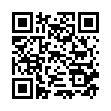|
Physics
Limiting-quasistationary model of electrochemical shaping
N. M. Sherykhalina, A. A. Zaripov, S. S. Porechny
Ufa State Aviation Technical University, Ufa, Russian Federation
Abstract:
The paper is focused on modeling of electrochemical machining in quasistationary approximation. The modeling is based on the use of Faraday's and Ohm's laws. The dependence of current efficiency on the current density in the form of a step function is used when solving this problem. The model enables us to study the configuration of a machining area, obtained in case of extreme high localization of a solution process. For this function there is a possibility in case of a non-steady process to divide sections of the machining area into zones with different conditions (presence and lack of solution). As the solution in case of such machining happens at a constant value of intensity module, there is a possibility to simulate the change of machining time by embedding of an electrochemical machining electrode into the edge of a workpiece. The evidence from practice shows that the accuracy of approximation of the non-steady process by quasistationary has three and more significant digits. Meanwhile, the computing time decreases by 100 and more times.
The problem of shaping while machining by the machining electrode in the shape of a plate with the isolated top surface is solved. The methods of the complex variable theory have been used to solve the problems on the assumption about constancy of electrolytic conduction. The Joukowski and Schwarz–Christoffel transformations are applied to construct conformal mapping. The accurate solution on the problem in quadratures is obtained.
The study on non-steady processes using a quasistationary model makes it possible to get information about a shape of the machining area at the beginning, continuation and the end of the machining process. In particular, it's found out that near the section of the machining start there is a solution like outflow from the board, well-known in hydrodynamics. It allows examining properties of a shape that is formed at the edge of the machining area.
Keywords:
electrochemical machining, complex functions, conformal mapping, quasistationary approximation.
Received: 07.09.2016
Citation:
N. M. Sherykhalina, A. A. Zaripov, S. S. Porechny, “Limiting-quasistationary model of electrochemical shaping”, Vestn. Yuzhno-Ural. Gos. Un-ta. Ser. Matem. Mekh. Fiz., 9:1 (2017), 65–71
Linking options:
https://www.mathnet.ru/eng/vyurm329 https://www.mathnet.ru/eng/vyurm/v9/i1/p65
|
| Statistics & downloads: |
| Abstract page: | 125 | | Full-text PDF : | 33 | | References: | 31 |
|



 Contact us:
Contact us: Terms of Use
Terms of Use
 Registration to the website
Registration to the website Logotypes
Logotypes








 Citation in format
Citation in format 